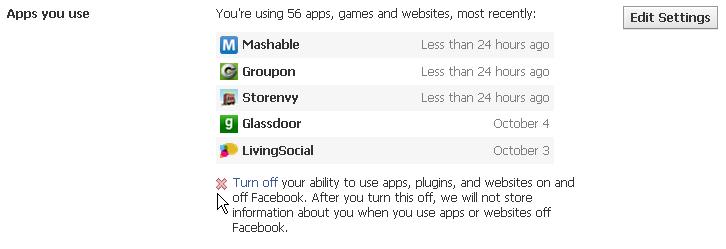By Yardi Blog Staff on October 5, 2012 in Technology
 The saying that if it bleeds it leads has been around for ages, but with TV stations and various news channels competing with the internet for attention it now seems that there’s less emphasis on fact and more emphasis on first to run. Rushed stories are reported as news without taking the necessary time to check sources and ensure that, in the best interest of the audience, the information is factual.
The saying that if it bleeds it leads has been around for ages, but with TV stations and various news channels competing with the internet for attention it now seems that there’s less emphasis on fact and more emphasis on first to run. Rushed stories are reported as news without taking the necessary time to check sources and ensure that, in the best interest of the audience, the information is factual.
One such example occurred last night when news outlets everywhere reported that Facebook had released a new membership price grid and that to avoid paying for membership you simply needed to share a message with your friends, otherwise you would be forced to pay the next time you logged in. This was a hoax and you can read all about it on Mashable.
This was very easy to decipher as false and further brings into question the credibility of news outlets to report accurate information. If this hoax was reported as actual news what else slips through? Is every news channel going to go the way of Huffington Post: report it now and ask for forgiveness and editorial changes later?
One final item to consider is that with the rush to get all these stories out as quickly as possible, it does become increasingly challenging to decipher between fact and fiction. Something mentioned every other day in the news is Facebook privacy settings. With Facebook currently at 1 billion plus users, the quantity of information at the fingertips of Mark Zuckerburg and his board is astounding, so here are a few facts you should know.
Here’s four Facebook “did you know’s”:
1. There was a report a few weeks ago claiming if you choose to make a post only visible to “friends” but one of them “likes” it, your post will now be visible to their entire network as well. This is not true. If you take the time to switch a post from the default “public” setting to a more personal setting, Facebook respects that.
2. By hovering over your friend’s name, then their status, and selecting settings, you can choose what updates of theirs you see in your news feed (helpful for that friend who is always trying to get you to play Superball).
3. Do you know how many apps you’re using and what information they’re using of yours? It might surprise you. From your newsfeed, click on the drop down arrow to the right of the word “Home”, choose “Privacy Settings,” “Ads, Apps, and Websites,” and then “Edit Settings.” From here, next to “Apps you use” choose “Edit Settings” again and see how and what information is being accessed. Each app has individual settings so it’s worth it to spend some time and see what information you’re sharing.
4. You may have heard that Facebook is tracking your behavior online – outside of Facebook. If this concerns you, then before you choose to edit your settings, notice the pink “X” directly below the apps image. If you’re using apps and concerned about what information is being collected about you through those apps outside of Facebook, you can turn that option off here.
There’s something to be said about being the first out with something, whether it’s a product, service, or news story; perhaps it’s even part of your brand identity. And as long as what you’re providing is quality, there’s nothing wrong with this approach.
On the other hand, there’s also something to be said about accuracy. Perhaps you’re not always the first to report but what you do share is quality, accurate, and provides value to your audience.
What other online stories have you heard about recently that you later learned were fabricated and do you feel that hurts an outlet’s credibility?




